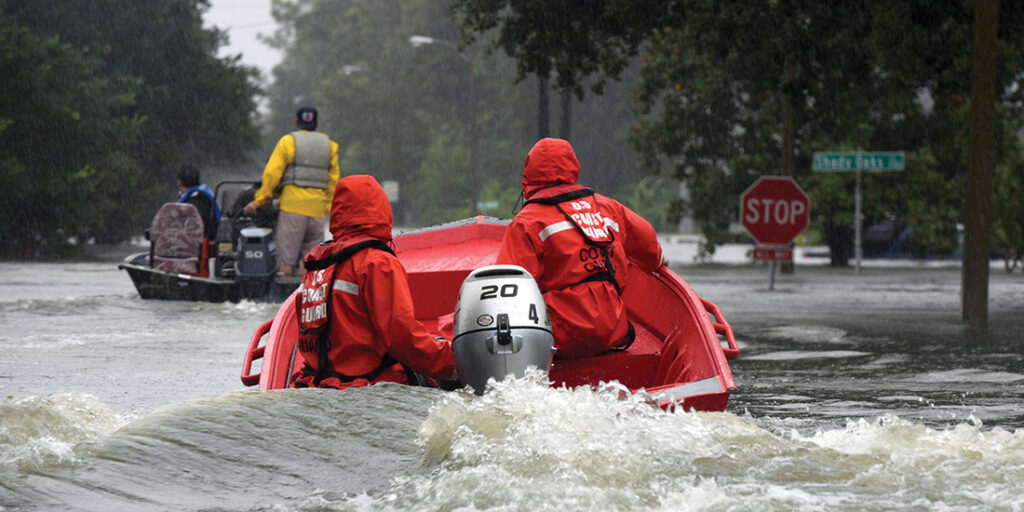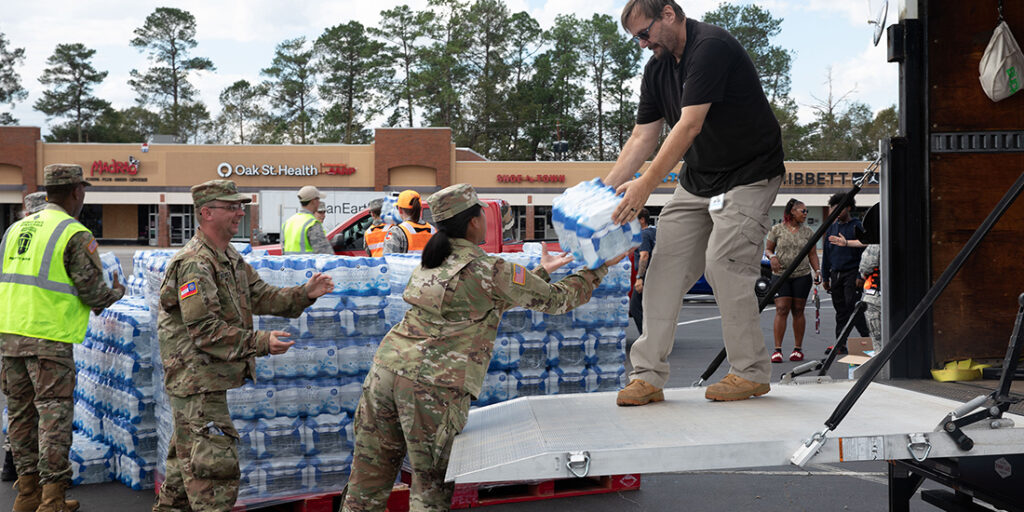military

Civil Defense: The Unseen Pillars of Preparedness
- Stephen Kastensmidt, Scott C. Lanham and John T. “Tim” Briery
Core to homeland security are institutions such as active-duty military, the National Guard, FEMA, and local first responders. Complementing these core institutions, however, are three often underrecognized forces that provide consistent, often uncompensated support: the Civil Air Patrol, the U.S. Coast Guard Auxiliary, and State Guard units. This article explores the statutory roles, operational responsibilities, and vital resources these forces offer from the perspective of three senior leaders actively engaged in their operations.
Most Recent

The Evolving Landscape of Domestic Extremism
Richard Schoeberl
August 20, 2025
Extremism in its many forms remains a growing threat in the U.S. There is heightened concern about ongoing violent extremist reactions to both domestic sociopolitical developments and international events that may be used to justify attacks. Countering this threat requires a comprehensive strategy, including improved intelligence efforts, stronger partnerships, and

State Defense Forces: The Untapped Backbone of Emergency Response
Robert Hastings
June 25, 2025
As disasters become more frequent, states face pressure to expand response capacity without raising costs. With stretched National Guard resources, limited federal support, and finite mutual aid, states have an overlooked resource: Title 32 State Defense Forces.

Why Emergency Management Is a Good Career for Transitioning Veterans
Mathew Perrill
June 11, 2025
For many service members, the transition from the military to a civilian workforce can be challenging. They have been trained in a specialized skill set and now must determine how to effectively apply those skills in civilian employment. In the emergency management field, veterans can find the vocational purpose they

A Holistic Strategy for Responders’ Well-Being
Camilo Olivieri
May 7, 2025
First responders and emergency managers face constant, high-pressure stress from trauma, long hours, and critical decisions. This often leads to chronic stress, increasing risks of heart disease, mental health issues, and substance abuse. Their ability to help others depends on prioritizing their own well-being through proactive self-care.
MILITARY Archives
Growing Foreign Threats to National Security, Part 2: Emergency Management Approaches and Choices
Glen Woodbury
October 30, 2024
This is Part 2 of a two-part article that explores the nation-state threat and its implications for the emergency management community regarding the operations, resilience,
Growing Foreign Threats to National Security, Part 1: Challenges and Considerations
Glen Woodbury
October 23, 2024
Part 1 of a two-part series explores the nation-state threat and its implications for the emergency management community, regarding the operations, resilience, resourcing, strategies, and
Thwarting Terrorist Threats at Home
Richard Schoeberl
September 25, 2024
Although the U.S. has not experienced another terrorist attack like the one on September 11, 2001 (9/11), the threat remains. In fact, the Federal Bureau
Dual-World Tabletop Exercises: Addressing Unmet Infrastructure Needs
Charles (Chuck) L. Manto
August 21, 2024
The U.S. critical infrastructure is vulnerable to many forms of cyber and electromagnetic threats. This article presents a new tabletop exercise concept for addressing these
Drones: A Life-Saving Time-Saver
Kevin Jones
July 24, 2024
As drone technology continues to evolve, it is important for law enforcement and other first responder agencies to understand the range of possible applications and
The Key Bridge Collapse – Through the Lens of Community Lifelines
Michael Prasad
July 17, 2024
The eight major elements of Community Lifelines use traffic-light-type color-coding to categorize the adverse impact status of a disaster. The article’s author has applied this
Follow Us
Get Instant Access
Subscribe today to Domestic Preparedness and get real-world insights for safer communities.
military
Most Recent

The Societal and Economic Dangers of Agroterrorism
Michael (Mike) Nicholls
March 12, 2025
While Ireland’s potato blight was destructive to the Irish population, modern agroterror attacks could be designed to hurt a nation’s

Back to the Basics: Navigating Crisis Leadership
Andrew Pence
February 19, 2025
From historic catastrophes to today’s challenges, crises pose significant public threats. By returning to the basics and prioritizing deliberate preparation,

Imagining the U.S. Without Power: A Dual-World EMP Exercise
Charles (Chuck) L. Manto, K. Luke Reiner and Dave Hunt
February 12, 2025
A dual-world tabletop exercise simulating an electromagnetic pulse event in Chicopee, Massachusetts, revealed startling discrepancies in outcomes between the city’s

Protecting Critical Infrastructure From Weaponized Drones
David Winks, Steve Chill, Frederick Ferrer, Michael J. "Apollo" Lovell, Mike Swearingen and Mary Lasky
December 4, 2024
Electricity substations are traditionally only protected by chain link fences and signage warning of the dangers of high voltage. However,
military Archives
Repeated Intelligence Failures – Not Connecting the Dots
Robert Leverone and Darren E. Price
February 14, 2024
Gathering intelligence about potential threats is a daunting task that many agencies perform. When agencies do not effectively share intelligence, they may miss connecting the
The [Evil] Empire Strikes Back: National Security Emergencies
Robert J. (Bob) Roller
February 7, 2024
After the Cold War fears of the 1980s ended, attention shifted from nation-state threats to terrorism and large-scale natural hazards. However, a federal emergency planner
Emerging Technologies, Part 5 – Legal and Privacy Concerns
Ian Pleet
November 8, 2023
This is Part 5 of a five-part series on emerging technologies that can enhance the management of and response to future emergencies and disasters. This
The Race to Interoperability
Charles J. Guddemi and Catherine L. Feinman
November 1, 2023
The Boston Marathon Bombing demonstrated the dedication, commitment, and strength of those who responded that day. The lessons learned from that event continue to strengthen
Emerging Technologies, Part 4 – Robotics and Automation
Ian Pleet
November 1, 2023
This is Part 4 of a five-part series on emerging technologies that can enhance the management of and response to future emergencies and disasters. This
Emerging Technologies, Part 3 – AI and Machine Learning
Ian Pleet
October 25, 2023
In Part 3 of a five-part series on emerging technologies, the author focuses on the roles of artificial intelligence and machine learning in responding to
Follow Us
Get Instant Access
Subscribe today to Domestic Preparedness and get real-world insights for safer communities.

